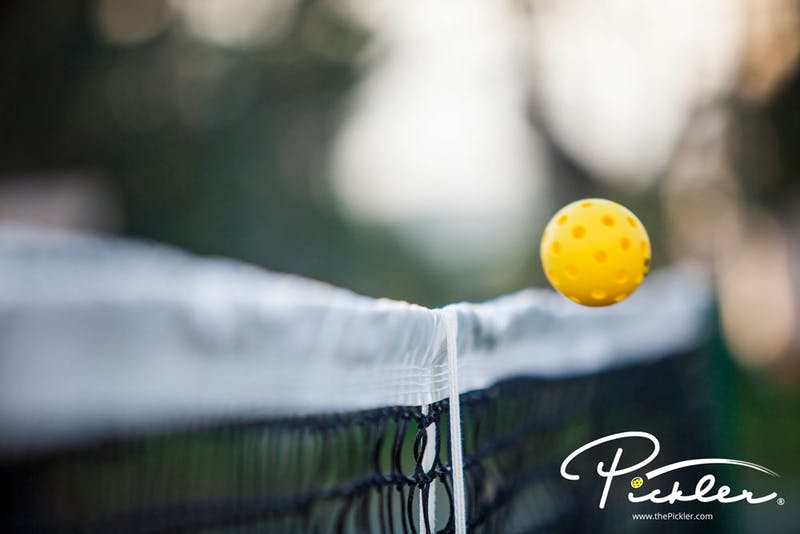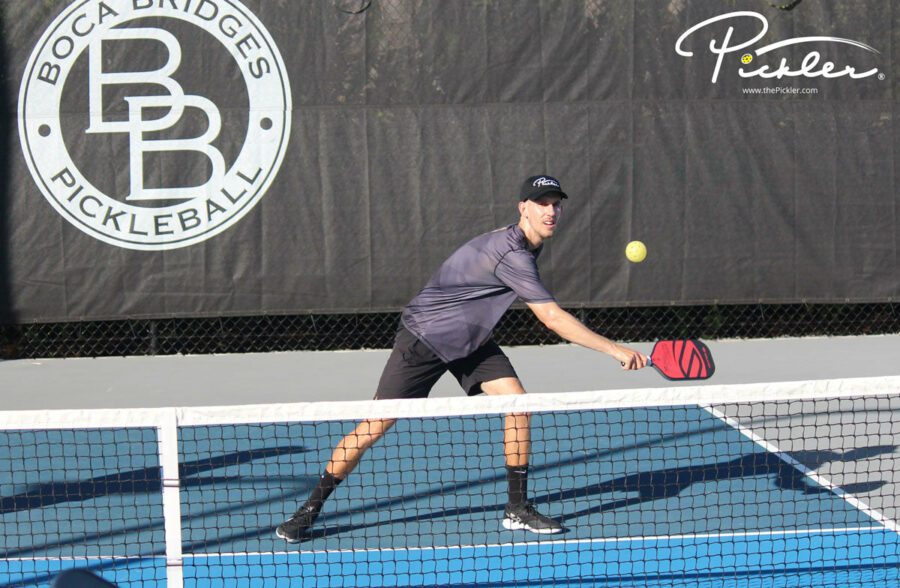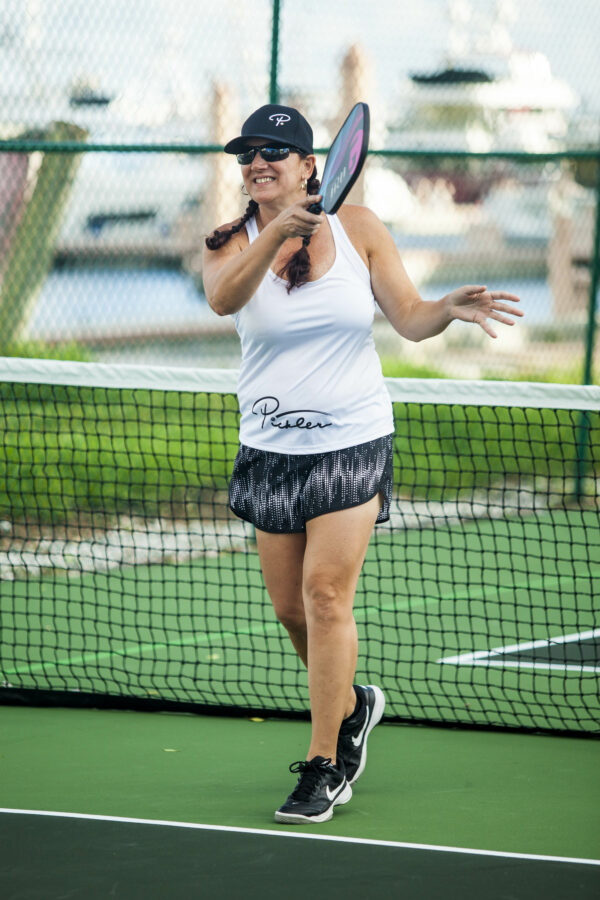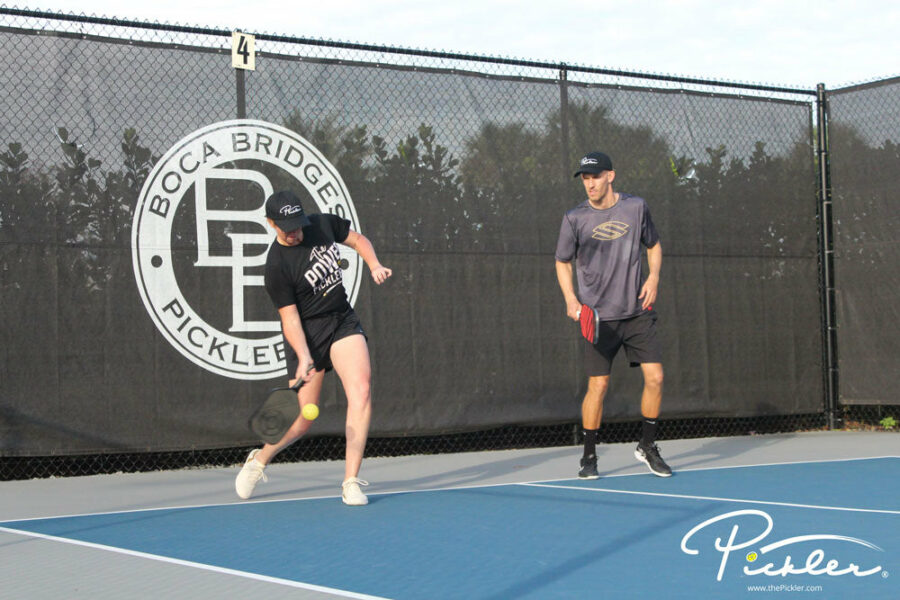Imagine you are deep in the transition area of the pickleball court. Your opponents hit what appears to be a drive deep in the court, but the pickleball clips the net and dribbles over. You start to race toward the pickleball. What do you do next with a let cord pickleball?
There are a few “musts” if you are reaching for a short ball on the pickleball court:
1. Proper Footwork
Footwork is key on the pickleball court, as footwork can make or break your shot execution. Footwork can also help you reach shots that may appear out of reach, like a let cord pickleball. If you encounter a let cord pickleball, move your feet and use a lunge step— which is a large step that almost looks like the exercise, lunges—as you prepare to make contact with the pickleball.
To execute a lunge step, take a large step directly toward the pickleball with your paddle-side leg. By taking a step with your paddle-side leg, you will have the most reach toward the pickleball (like a first baseman on the baseball or softball field stretching with his or her glove and glove-side foot). You will also be able to more quickly revert back to your ready position, as your paddle-side leg is usually your more dominant, stronger leg (so you will be able to push back to your ready position more easily).
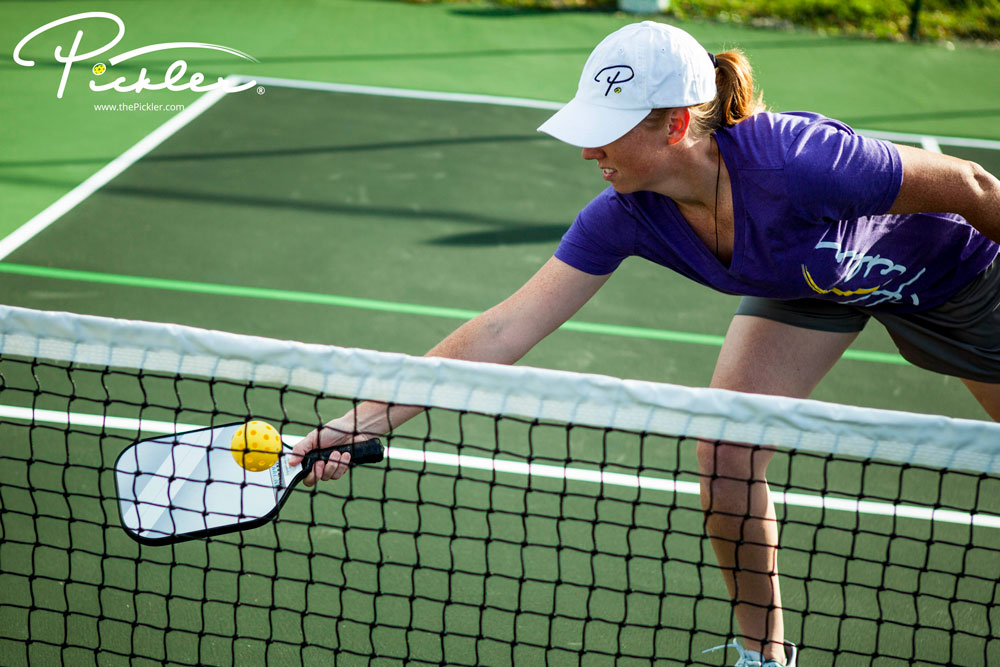
2. Shot Selection
With a let cord pickleball, you will likely be racing to the ball, off-balance, and out of position. As a result, your shot selection will be limited. However, you do have a few options:
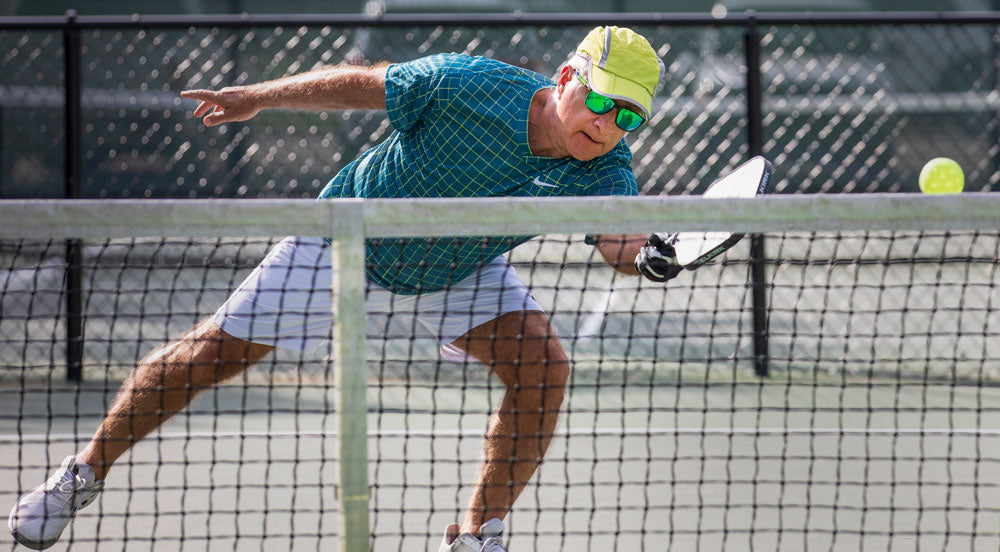
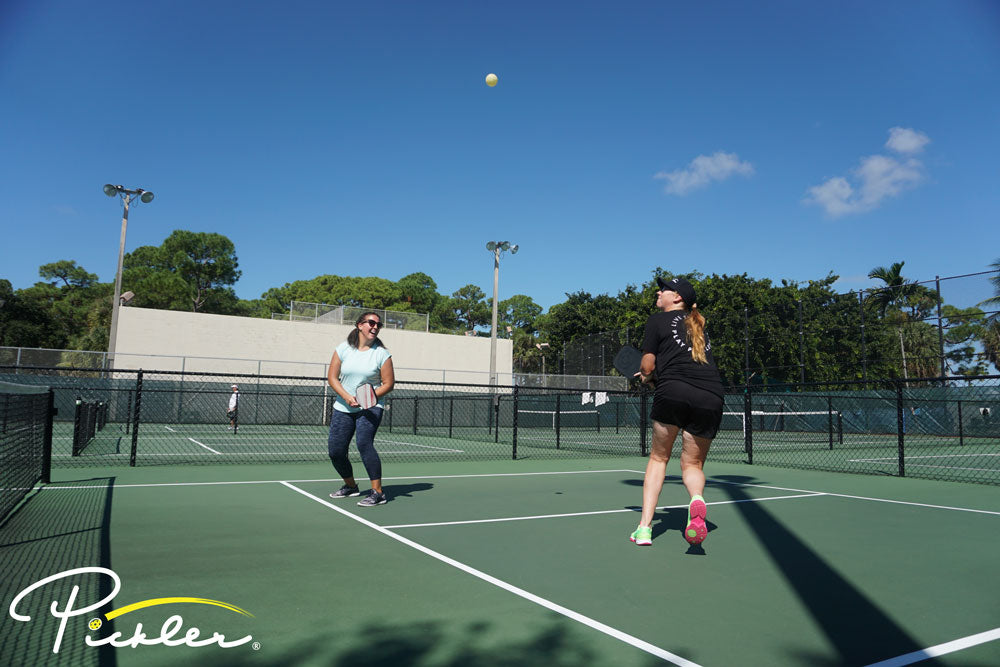
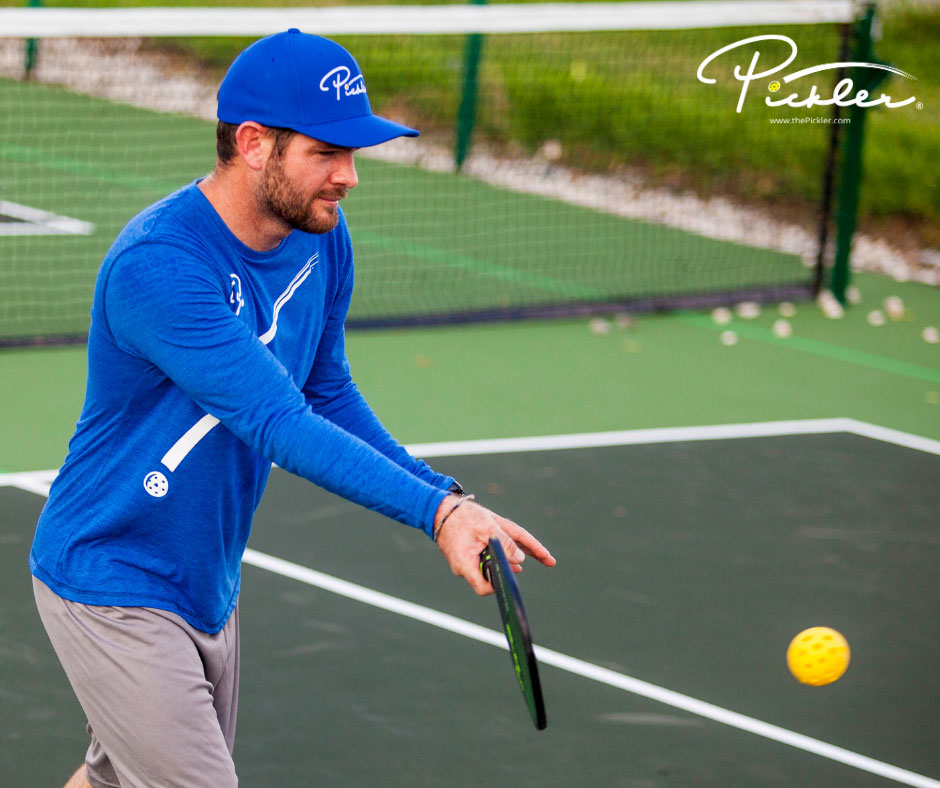
So, the next time you encounter a let cord pickleball from your opponents, use a lunge step and, more than likely, softly dink the pickleball crosscourt. Consider using a surprising lower percentage shot only when you can manage the risks with (i) additional space between the pickleball and the net, (ii) more time to react to the pickleball, and (iii) a lead or non-pressure situation (where you can take additional risk).

